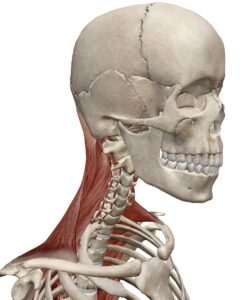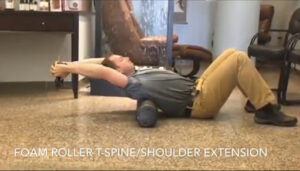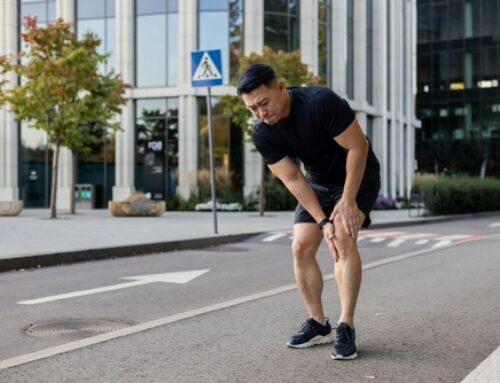Most of us have woken up with a stiff neck at least once in our lifetime. Whether it was caused by sleeping awkwardly or from checking your blind spot too quickly while driving, many of us do not know what to do next. Regardless of the injury I encourage you to have a medical professional perform a proper examination on any injury before self-treatment, but I also understand that it is not always possible to have that done immediately. The following are some simple home remedies and exercise that you can do to help manage your pain and symptoms if you wake up with a stiff neck and do not know what to do. Check out a quick YouTube video of tips here as well.
Keep Moving
The first step anyone should take is to keep moving your neck. On many occasions, when pain develops, we actively avoid moving our neck because it hurts! This can cause the joints and muscles to seize and make recovery longer and harder. You should try to move your neck through any tolerable range of motion but not into sharp pain. Movement that creates a deep ache or feels very stiff is ok, to your tolerance level.
In some cases, your range of motion may be significantly decreased, but it is important to maintain whatever range of motion is tolerable. If your pain increases significantly with motion while seated or standing, you can try and perform your range of motion exercises while laying on your back. Taking gravity out of the equation can often increase the amount of tolerable mobility that you have.
I encourage many patients to do a simple range of motion exercises in the shower. The shower provides a warm and relaxing environment allowing the neck muscles to relax. After a few minutes of the warm water on the affected area, go through all the different motions that our neck moves in. This includes looking over each shoulder (rotation), bringing one ear to your shoulder (lateral bend), looking up and down with your head (flexion/extension), and finally cervical protraction and retraction. With each repetition go as far as you can tolerate without increasing your symptoms and repeat. You may find your motion will increase with each repetition and each set.
Try Isometric Exercises
 Once you have performed these basic range of motion exercises the next step is to begin activating your neck muscles. The best way to activate your muscles when you are experiencing a lot of neck pain is to perform what are called “isometric contractions.” An isometric contraction refers to activating a muscle without changing its length.
Once you have performed these basic range of motion exercises the next step is to begin activating your neck muscles. The best way to activate your muscles when you are experiencing a lot of neck pain is to perform what are called “isometric contractions.” An isometric contraction refers to activating a muscle without changing its length.
The goal is to perform isometric contractions in all the same ranges of motion as we previously discussed. Begin with rotational isometrics. Bring your hand to the side of your head and try and turn your head into your hand. Use your hand to stop your head from turning but continue to activate the musculature as though you would be looking over your shoulder. Meet the force of your head turning with your hand, so that there is no actual change in position. Hold this contraction for 10 seconds. Next perform it looking over the other shoulder.
This same technique can be applied to your lateral bend motions and your flexion/extension ranges of motion. The goal is to activate all the muscles that move your head without having to produce movement. These types of contractions can not only help build back strength in your injured neck, but they can also help moderate your pain.
Thoracic Mobility
On some occasions we may experience too much pain in a certain region to perform exercises. When this occurs, we can work adjacent body regions and have a positive impact on your recovery. The most important adjacent region to work on when you have neck pain is the upper back (aka the thoracic spine.) When the upper back is restricted or immobile, the neck takes on an increased stress. This can not only irritate the pain but in some cases, it can be an underlying factor leading to your pain. The following are some thoracic mobility exercises that can be used to help unload the cervical spine and manage your neck pain.
- Try going for a walk. We mostly associate walking as a cardiovascular exercise, however, it can be a great spinal mobilization tool. Walking can improve range of motion in all areas of the spine. To help improve a tight neck, try walking fast and letting your arms swing. This can help with rotational movement of the thoracic and cervical spine and begin the process of loosening the tight muscles of the shoulder and neck.
 Thoracic spine extension over a foam roller. While performing this exercise, roll the foam roller through the upper back until you feel a spot that is tight or restricted. Support your neck and extend backwards over the foam roller. Hold for 10 seconds and repeat.
Thoracic spine extension over a foam roller. While performing this exercise, roll the foam roller through the upper back until you feel a spot that is tight or restricted. Support your neck and extend backwards over the foam roller. Hold for 10 seconds and repeat.- The Tripod Thoracic Rotation exercise is a great exercise to increase thoracic rotation and loosen tight shoulder/neck muscles. Perform this exercise by placing two knees and one hand on the floor, keep them stationary. The hand that is not on the floor should slowly and smoothly move from the floor to the ceiling allowing the spine and shoulder to rotate with it. Return that arm back to the floor and reach across the body as far as you comfortably can. This exercise can be found in our Morning Mobility Routine video here.
If your pain and stiffness persist or if episodes of this pain become more frequent, I highly recommend you search out a competent chiropractic physician in your area. Many tools like acupuncture, Active Release Technique, rehabilitation exercises, and spinal manipulation can be used to reduce pain and stiffness of the cervical spine. At [Core] Chiropractic and Wellness, we strive to not only treat your problems but to also educate you about your problems, to help you become healthier than you have ever been.

Daryl C. Rich, D.C.






